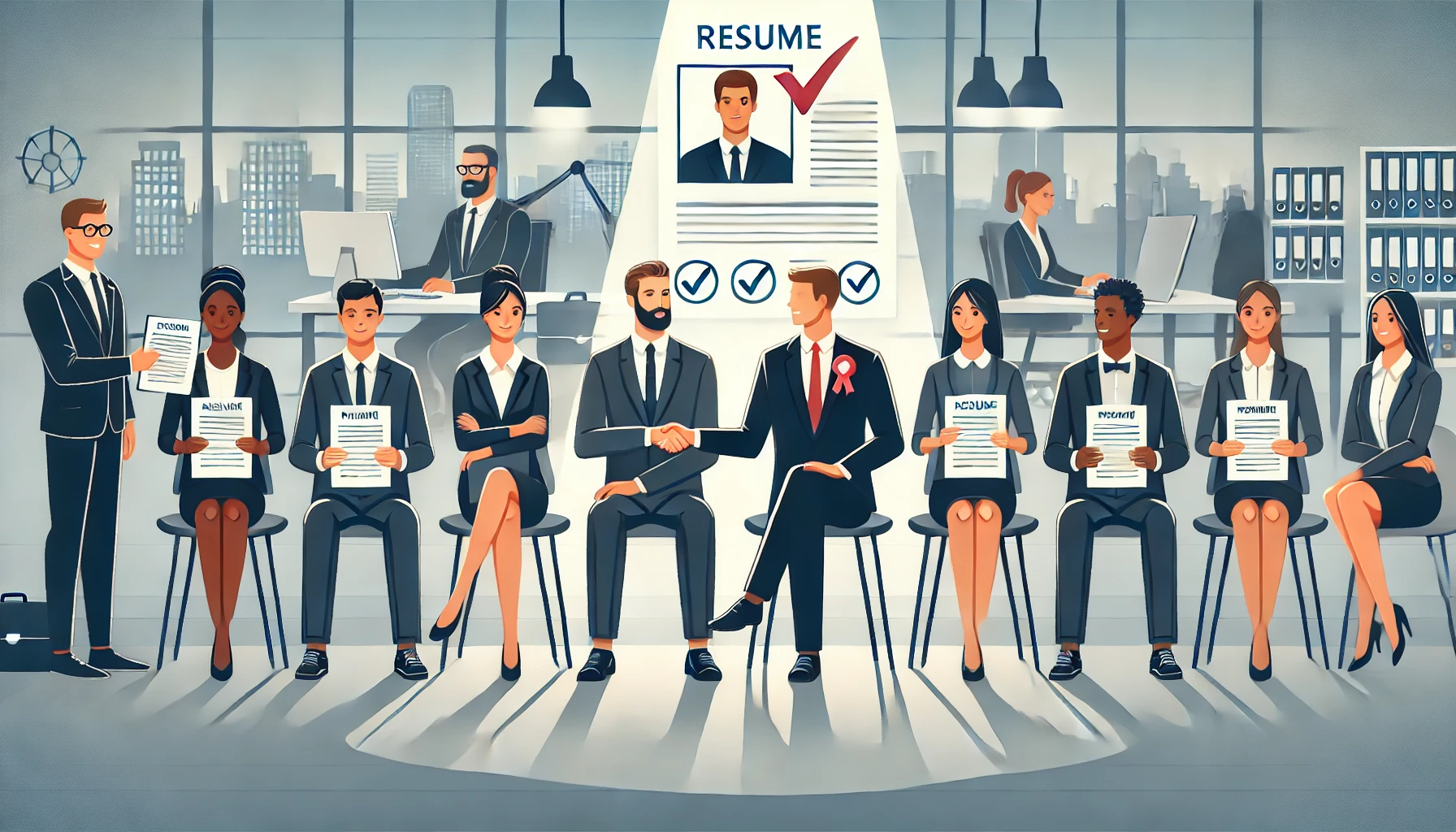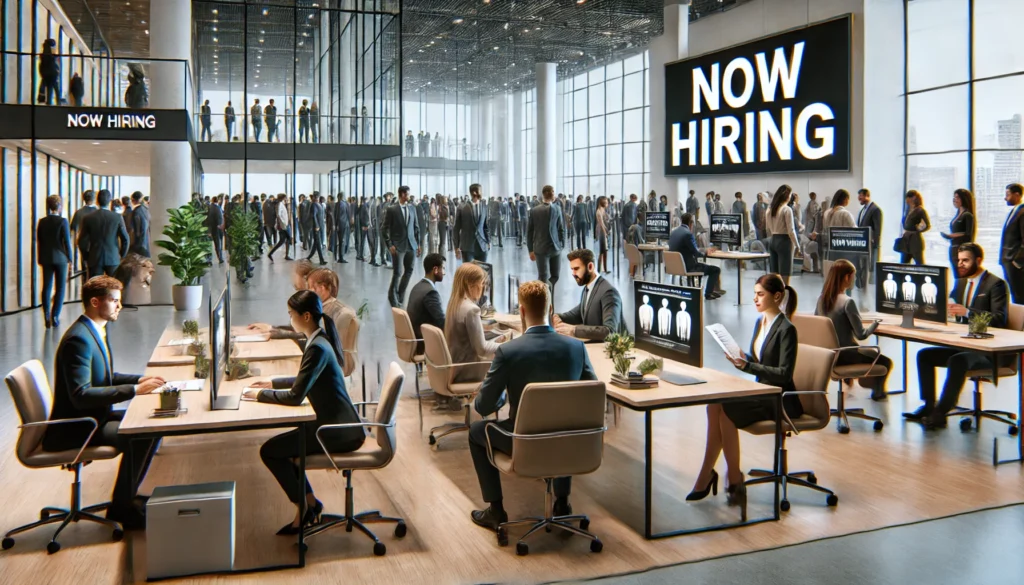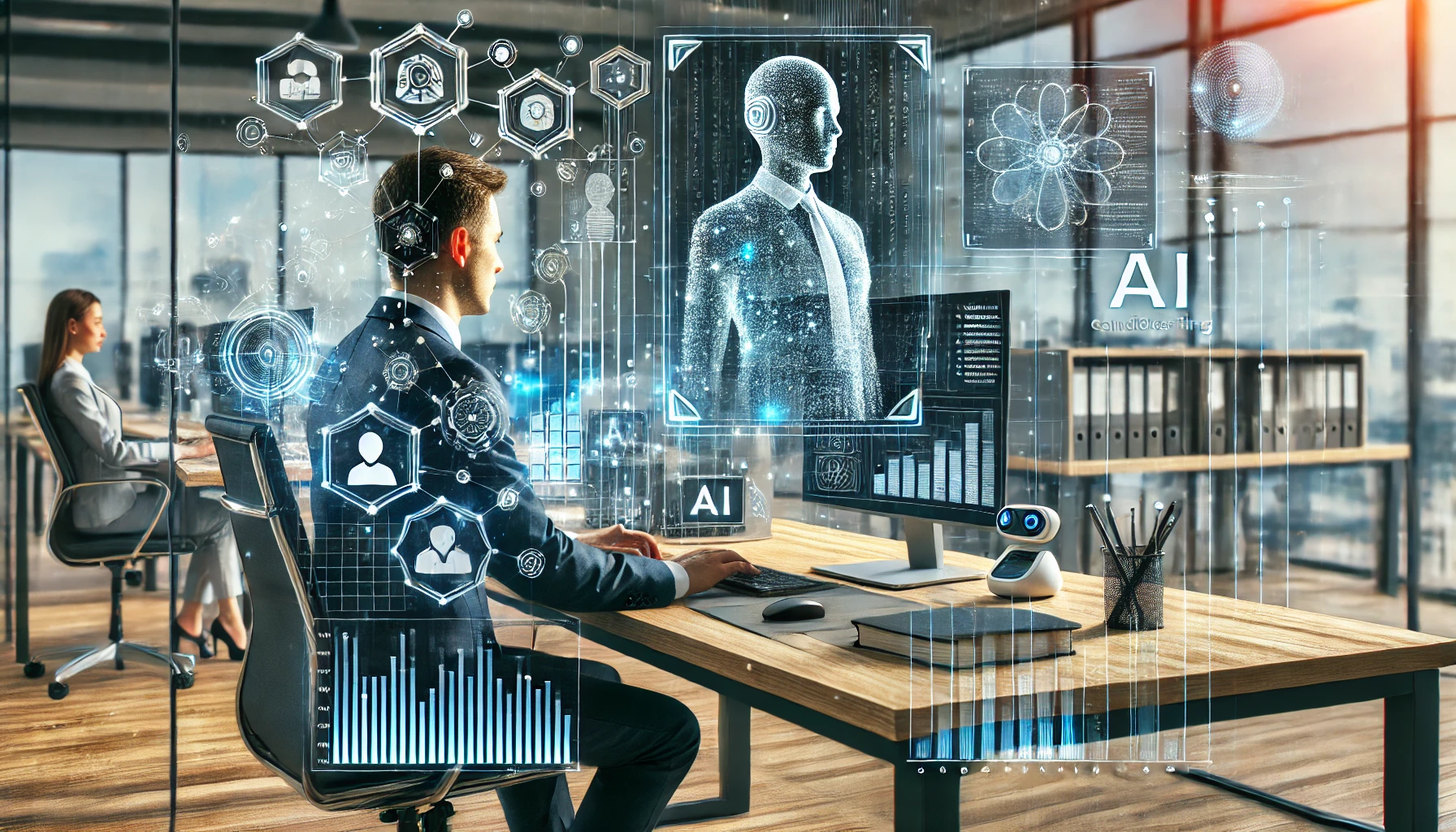High-volume hiring is a common phenomenon in many organizations across industries and comes with its own set of problems. The pressure to hire many people at once and in a short time can be challenging for HR departments and the recruitment process. As stated by the Society for Human Resource Management (SHRM), 70% of companies face challenges in high-volume hiring, which include slow time-to-hire, high recruitment costs, and increased risk of making wrong hiring decisions.
There are several reasons why efficient and accurate screening methods are important. First, they cut down the time taken to hire staff to a great extent thus enabling organizations to get the needed professionals as soon as possible. Second, they improve the quality of hires by ensuring that only the right candidates move on to the next stage of recruitment. According to a survey conducted by Harvard Business Review, organizations that adopt data analytics for screening purposes are likely to make better hires than those that employ conventional methods.
In addition, proper screening and selection enhance the candidate experience, which is crucial for improving the employer branding. Today’s applicants want to go through the hiring process with the least time and effort. According to a LinkedIn Talent Solutions survey, 83% of candidates stated that a poor interview experience could deter them from a position or organization they initially wanted to work with.
It is therefore possible for organizations to effectively manage high-volume hiring through the application of innovative technologies and best practices in screening and selection. This article will elaborate on these methods and show how they can revolutionize the recruitment process, allowing for a fast and effective assessment of a large number of applicants.
Try PreScreen AI for Free
Don’t miss out on the opportunity to experience all the benefits of AI-powered interviews firsthand – try our free trial today.
Best Practices for Screening a Large Number of Applicants Quickly and Accurately

Pre-Screening Techniques for High-Volume Hiring
Automated Resume Parsing
The use of automated resume parsing tools is crucial in high-volume hiring. These tools help in pulling out and sorting important information from resumes including education, experience, and skills among others and this helps in saving time that would have been used in the initial screening. For instance, IBM employs the use of automated resume parsing to sort through thousands of resumes. This technology not only accelerates the process but also makes sure that no candidate is left behind due to a mistake or prejudice.
Keyword Matching
Using AI for keyword matching allows us to find the most suitable resumes that meet the job description. This way, AI can discard the resumes that do not contain the necessary keywords and phrases that are relevant to the job description. This method enhances the validity of the shortlisted candidates and therefore the quality of new employees. A study by the National Bureau of Economic Research indicates that keyword matching can increase the effectiveness of resume screening by 30%.
Applicant Tracking Systems (ATS)
ATS are particularly helpful in sorting through a large number of applicants. A good ATS can help in the entire recruitment cycle from posting the job to getting the candidate on board. For instance, Google and Microsoft use ATS in order to streamline their high-volume hiring processes in their large organizations. Some of the essential features of a good ATS include:
Filtering. An ATS can screen out applicants according to certain criteria that include education, experience and skills.
Ranking. It can sort the candidates based on how suitable they are for the position, and thus select those who best match the job description.
Reporting. An ATS offers specific and thorough information on the recruitment process; this can help HR departments to make informed decisions.
AI-Powered Screening Tools
Utilizing AI to Assess Skills and Qualifications
AI-powered screening tools can evaluate candidates’ skills and qualifications more accurately than traditional methods. For instance, PreScreen AI bot is used to screen applicants’ in real time via AI-powered interviews in chat/voice and online assessments, analyzing their responses and predicting their suitability for the role.
Benefits of Machine Learning Algorithms
Historical data can be used by machine learning algorithms to determine the likelihood of success of candidates. A study by McKinsey revealed that the use of AI in recruitment helped companies achieve a 50% improvement in hiring effectiveness and a 20% reduction in the time taken to fill positions.
Automating the Scheduling Process
It is crucial to automate the interview scheduling process in high-volume hiring environments. Scheduling apps such as Calendly and GoodTime can help with scheduling, scheduling follow-up and even scheduling of new interviews, among other things.
These tools link to the calendar applications and the candidates can select the time that is convenient for them. This minimizes the to and fro communication that is common in the scheduling process hence saving time for both the candidates and the recruiters.
Standardized Evaluation Criteria
Setting up common guidelines for initial assessments helps to avoid bias and makes the process more objective. The criteria should be job-specific and include skills, experiences, and qualifications required for the position as outlined in the job description.
The use of standardized criteria also assists in the elimination of prejudice and the fair assessment of all the candidates. In a study done by Harvard Business School, it was found that organizations that employ standardized evaluation criteria are likely to achieve their diversity and inclusion goals in hiring.
Thus, the described best practices can help organizations enhance their high-volume hiring processes and effectively assess a large number of candidates. This not only improves the quality of hiring but also ensures that the candidates have a good experience, which is imperative for establishing a good brand image.
Try PreScreen AI for Free
Don’t miss out on the opportunity to experience all the benefits of AI-powered interviews firsthand – try our free trial today.
Innovative Selection Methods for High-Volume Hiring

Automated Assessments
The use of automated assessments is common in high-volume hiring because they are effective and efficient in providing standardized evaluations. Common types include:
- Skills Tests. These evaluate specific job-related abilities, such as coding skills for software developers or typing speed for administrative roles.
- Cognitive Ability Tests. These measure general mental capabilities, such as problem-solving, logical reasoning, and numerical aptitude.
- Personality Questionnaires. These assess traits such as conscientiousness, agreeableness, and emotional stability, which can predict job performance and cultural fit.
Benefits of Using Automated Assessments
The use of automated assessments enables organizations to assess a large number of candidates at once, which is very useful in situations where organizations are recruiting a large number of employees. They avoid subjectivity and produce consistent results as opposed to manual assessments which are susceptible to bias. In addition, the information gathered from these assessments can be used to make informed decisions when hiring new employees. A survey conducted by Deloitte revealed that firms that adopted automated assessments enhanced their hiring processes by 20% and improved employee retention by 15%.
AI-Powered Interviews
The use of AI in interviews is a great improvement in the recruitment process especially in high-volume hiring. These interviews are conducted through AI interviewing bots where the bot can ask questions, get answers, and evaluate candidates based on certain parameters. These bots use complex algorithms to analyze both spoken and unspoken communication to give a holistic view of each applicant.
AI’s capacity to identify non-verbal signals and character characteristics provides a more comprehensive view of the candidate and their potential to be a part of the company’s environment. By assessing confidence, energy levels, and communication, AI can give an idea of whether the candidate will be a good fit for the company.
The evidence from the research shows that it is possible for AI to accurately predict job performance. A study conducted by the National Bureau of Economic Research discovered that the use of AI interviews can increase the accuracy of job performance assessment by a quarter compared to conventional interviews. This level of precision is because the AI can maintain a high degree of standardization in applying the evaluation criteria and also pick up on finer cues of behavior that a human interviewer might miss. Furthermore, AI can help determine the value fit between the candidate and the company, which is important for employee engagement and turnover.
Try PreScreen AI for Free
Don’t miss out on the opportunity to experience all the benefits of AI-powered interviews firsthand – try our free trial today.
Advantages of AI-Powered Interviews in High-Volume Hiring
AI interviews offer several advantages that make them ideal for high-volume hiring:
- Flexibility
The AI-powered interviews can be taken by the candidates at their own time, which makes the process less time-consuming and more convenient for the candidates. This is particularly useful for candidates who are working or are in different time zones at the time of the examination.
- Standardized Evaluation Process
AI offers a standard and impartial approach to the evaluation. Since the criteria are predetermined, AI does not have issues with interrater variability and possible biases from the human interviewers. This standardization makes it possible for all the candidates to be evaluated in the same manner and to the same specifications.
- Comprehensive Assessments
AI can identify subtle cues, such as micro-expressions and variations in tone, that might be missed by human interviewers. This capability leads to more comprehensive assessments, providing a holistic view of each candidate’s potential.
- Efficiency
AI is capable of interviewing many candidates at once, thus saving time and money during the preliminary selection process. For example, Unilever adopted the use of AI interviews and saw that the early-stage screening process was cut down by 75% thus freeing the HR teams to work on other important matters.
- Data-Driven Insights
The data collected during AI interviews can be analyzed to identify trends and patterns in candidate responses. These insights can inform future hiring strategies and help organizations continuously improve their recruitment processes.
- Enhanced Candidate Experience
By providing a more flexible and effective interview process, organizations can enhance the candidate experience. A positive interview experience could also be beneficial for the employer in terms of brand recognition and image, which would help the employer to attract better talent in the future. In a survey conducted by LinkedIn Talent Solutions, 87% of the candidates stated that they had a positive perception of the companies that implement efficient and innovative approaches to recruiting.

Gamified Assessments
Gamified assessments are becoming increasingly popular in recruitment. These assessments use game-like elements to evaluate candidates’ skills and attributes in an engaging and interactive manner.
Examples of Gamified Assessments
- Simulations. Realistic job simulations where candidates perform tasks they would encounter in the role.
- Problem-Solving Games. Games that test candidates’ ability to solve complex problems and think critically.
- Interactive Tasks. Activities that require candidates to demonstrate their skills in a dynamic environment.
Benefits
Gamified assessments are a fun and interactive way to assess candidates, which reduces their stress levels during the assessment process. It is useful in evaluating non-cognitive competencies like teaming, management, and flexibility. Furthermore, since the assessments are based on actual performance in real-life situations, the assessments are less prone to bias and offer a better predictor of the candidate’s future performance. As highlighted by PwC, organizations that employed gamified assessments reported a 30% boost in candidate satisfaction and 20% enhanced hiring success.
Predictive Analytics in High-Volume Hiring
Predictive analytics includes the use of past hiring data to determine trends and probable future outcomes of candidates. By analyzing previous employees’ performance and career paths, organizations can create models that predict the potential success of candidates.
Building Predictive Models
Predictive models incorporate test scores, interview ratings, and other variables to estimate employee performance. Such models can also help to define the essential characteristics that are linked with high performance in a particular position. For example, a financial services firm may determine that individuals who possess analytical thinking and precision are more suitable for analyst roles.
Implementing predictive analytics in the hiring process can help organizations make more evidence-based decisions and minimize the role of hunches and intuition. This results in improved quality of employees and reduced rates of employee turnover. According to the Harvard Business Review, organizations that adopt predictive analytics in recruitment saw a 50% increase in employee productivity and a 25% decrease in recruitment expenses.
Through the implementation of these new selection methods, organizations can improve their high-volume hiring practices by increasing the chances of hiring the right candidate. These methods not only enhance the quality of hires but also enhance the candidate experience, which enhances the organization’s image as an employer of choice.
Try PreScreen AI for Free
Don’t miss out on the opportunity to experience all the benefits of AI-powered interviews firsthand – try our free trial today.
Final Thoughts on the Importance of Adopting Innovative Methods for High- Volume Hiring
Adopting innovative methods in high-volume hiring is essential for organizations to stay competitive. Leveraging advanced technologies like AI-powered interviews, automated assessments, and predictive analytics enhances efficiency and accuracy, streamlines operations, and improves the quality of hires. These tools enable HR teams to manage large applicant pools effectively, ensure fair evaluations, and gain deeper insights into candidates’ skills and potential.
Innovative selection methods not only reduce time-to-hire but also enhance the candidate experience and strengthen the employer brand. Data-driven approaches allow for informed hiring decisions, reducing reliance on subjective judgments and increasing the accuracy of predicting candidate success and job performance.
Balancing Automation and Human Touch in High-Volume Hiring
Despite the advantages that automation brings, it must be complemented by human decision-making and interpersonal communication. While the process can be aided by technology and automated tools, the final say on the candidate and the overall fit for the role cannot be solely left to machines.
The first filter is set up using automated tools and interviews, but the final decision requires human intervention. This combination results in a more holistic hiring process that reflects the organization’s values.
Related Articles
How Do Enterprises Manage High-Volume Recruiting for Seasonal and Temporary Roles with AI?
Discover how PreScreen AI transforms high-volume recruiting for seasonal and temporary roles, helping enterprises streamline hiring, reduce...
How to Integrate AI Recruitment Bots with HR Systems Like a Pro
This article discusses how to incorporate AI recruitment bots into existing HR platforms, solve the potential issu...
Implementing AI Interview Chatbot: Business Advantages
In this competitive world of businesses, organizations are required to find the right talent to be able...




